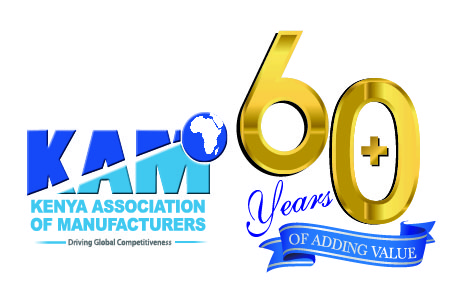Rethinking Kenya’s export strategy key for economic prosperity
By Rajan Shah
The pursuit of export-led economic growth has been clearly articulated in the Government’s manifesto; Bottom-up Economic Transformation Agenda (BETA). The Kenya Association of Manufacturers (KAM) has also prioritized export-led growth as a pivotal pillar within its strategic framework for industrialization to realize the country’s ambitious plan to increase manufacturing sector contribution to Gross Domestic Product (GDP) from the current 7.8% to 20% by 2030.
Historically, the transformative growth of industrialized nations has been propelled by exports. Global economic powerhouses like China, Canada, Germany, and India have harnessed remarkable export strategies to fuel their economic engines that have become the benchmark for other aspiring nations. Their strategy has mainly been to generate funds, derived from diverse sources such as budget allocations, domestic and international borrowings, and export-generated revenue, which are channeled through financial institutions to support exporters. This multifaceted approach aids local exporters in overcoming international trade challenges, spurs economic progress whilst protecting local investments.
Regionally, Egypt and Morocco are emerging as key success stories in creating and executing an effective export-led strategy whose impact over the last few years has been tremendous. Their governments have made strategic investments in transportation infrastructure and port development, while also offering tax incentives and access to export credit insurance to support their exporters. Egypt allocated USD 193 million from its consolidated fund for the fiscal year 2022-2023 to support its export development and a further USD 161 Million to support reduction of the electricity prices for its industrial sector, as part of Egypt’s goal to raise the private sector’s contribution to various economic activities and improve their global competitiveness. This has resulted in Egypt’s total exports surging to18.3% year-on-year (YoY) in 2022. On an absolute basis, Egypt’s exports in 2022 were USD 51.6 billion compared to Kenya’s at USD7.4 billion and Tanzania’s at USD6.8 billion.
For Kenya to effectively implement its export promotion strategy, it must align its national approach to fiscal strategies to the structures under the regional Common External Tariffs such as East African Community – Common External Tariffs (EAC-CET), COMESA, and AFCFTA. For instance, the EAC – CET structure outlines four band levels of value addition which are raw materials, intermediate products, finished and sensitive goods. Based on this structure any fiscal measures are reviewed against the four band structures to create a level operating environment for industries across the EAC region. Any imposition of additional domestic taxes midstream along the value chain outside this four-band tariff structure distorts the EA protocol and disadvantages the Kenyan companies with increased cost of production compared to regional competitors. This negatively impacts their competitiveness in both domestic and export markets. Furthermore, the resulting rise in product costs could inadvertently amplify the appeal of imported goods, potentially flooding our local markets with external products.
Whilst distortive, domestic taxes upstream in the value chain is not the preferable way to protect upcoming nascent industries, it is also particularly important that these industries are nurtured from inception as they normally come with huge investment costs and are very key to our industrialisation agenda and spearheading job and wealth creation. Industrialised countries like India have used targeted incentives to these industry players such as budgetary allocations toward export promotion, periods of tax holiday, higher investment allowances, lower power tariffs, tax incentives on their input costs, provision of cheaper land and development of infrastructure around the facilities that could bolster their global competitiveness. These measures not only cultivate domestic markets but also open doors to regional exports, facilitated by initiatives like the COMESA and African Continental Free Trade Area (AfCTA).
On the positive side, we need to acknowledge efforts Kenya is undertaking towards export promotion through certain value chains. For example, in the tea sector, there is enhanced effort to increase the share of value addition done locally on our raw tea before it is exported. There are also commendable efforts in the Leather and Pharmaceutical industry to enhance our capacity to export finished manufactured products.
In conclusion, the pursuit of export-led growth is not only laudable but also necessary. However, how it is achieved requires prudent considerations. We must be careful not to introduce policies that could inadvertently undermine the competitiveness of vital industries and compromise the success of export initiatives. Instead, a targeted incentive-driven approach, combined with strategic collaboration between industries, promises a more viable route to realizing the noble aspirations of the government’s plan.
The writer is the Chairperson of Kenya Association of Manufacturers and can be reached at info@kam.co.ke.
Looking for elevation? KAM lifts you up.
- Direct technical assistance
- Capacity building programmes
- Networking and mentorship
- Industry insights & analysis
- Trade & export development services
